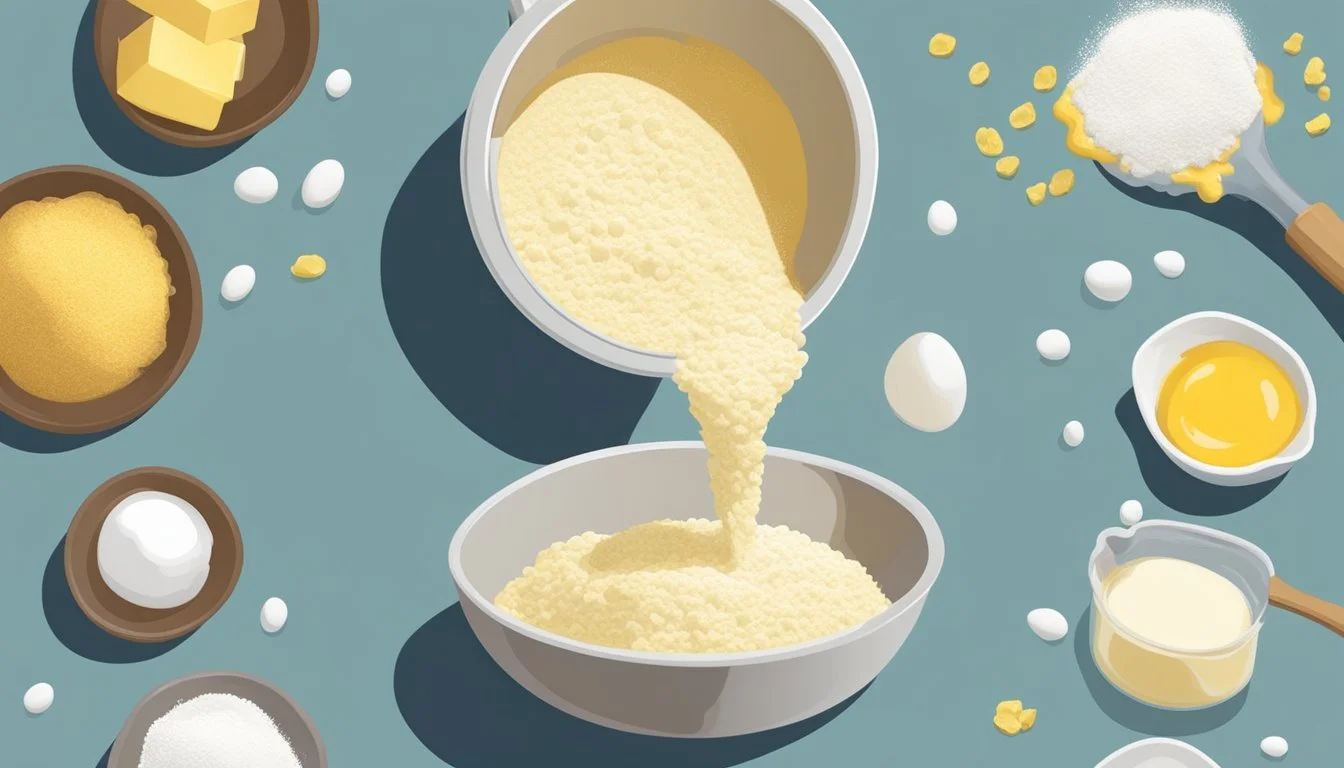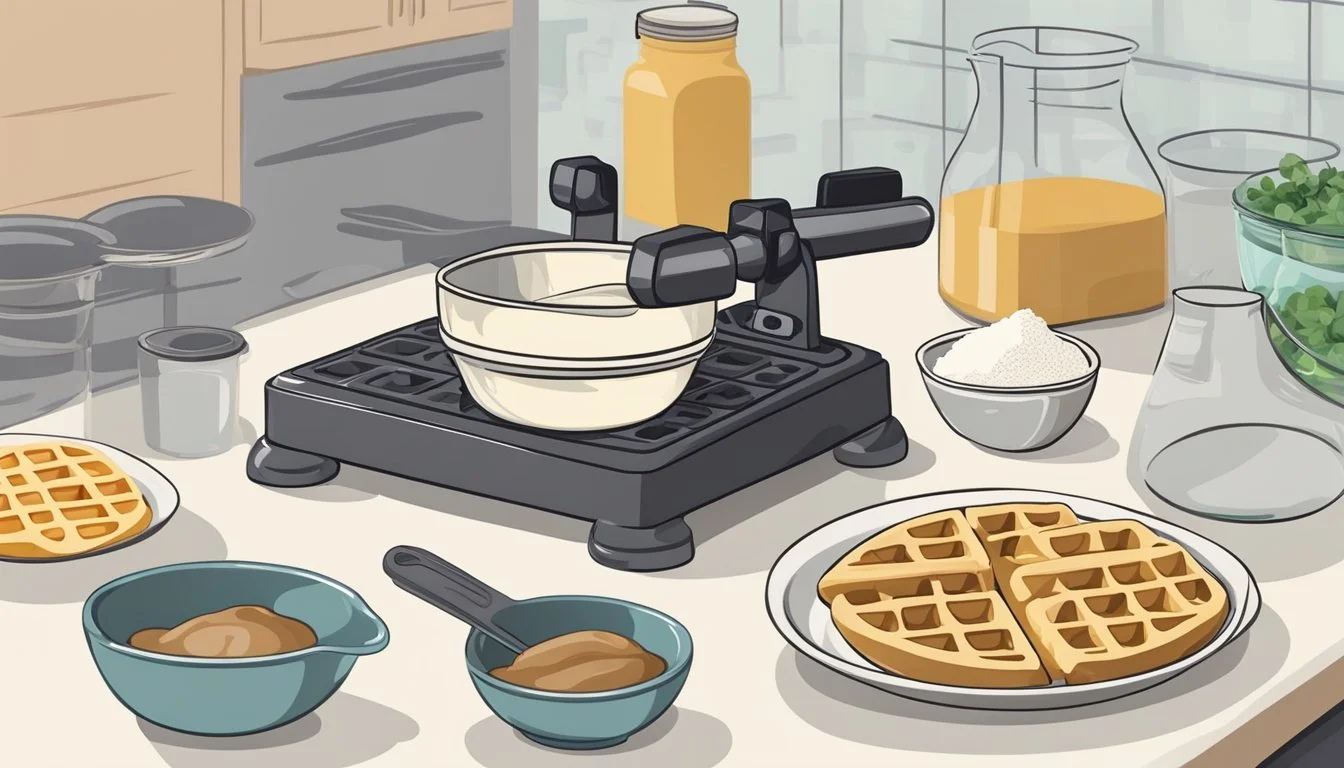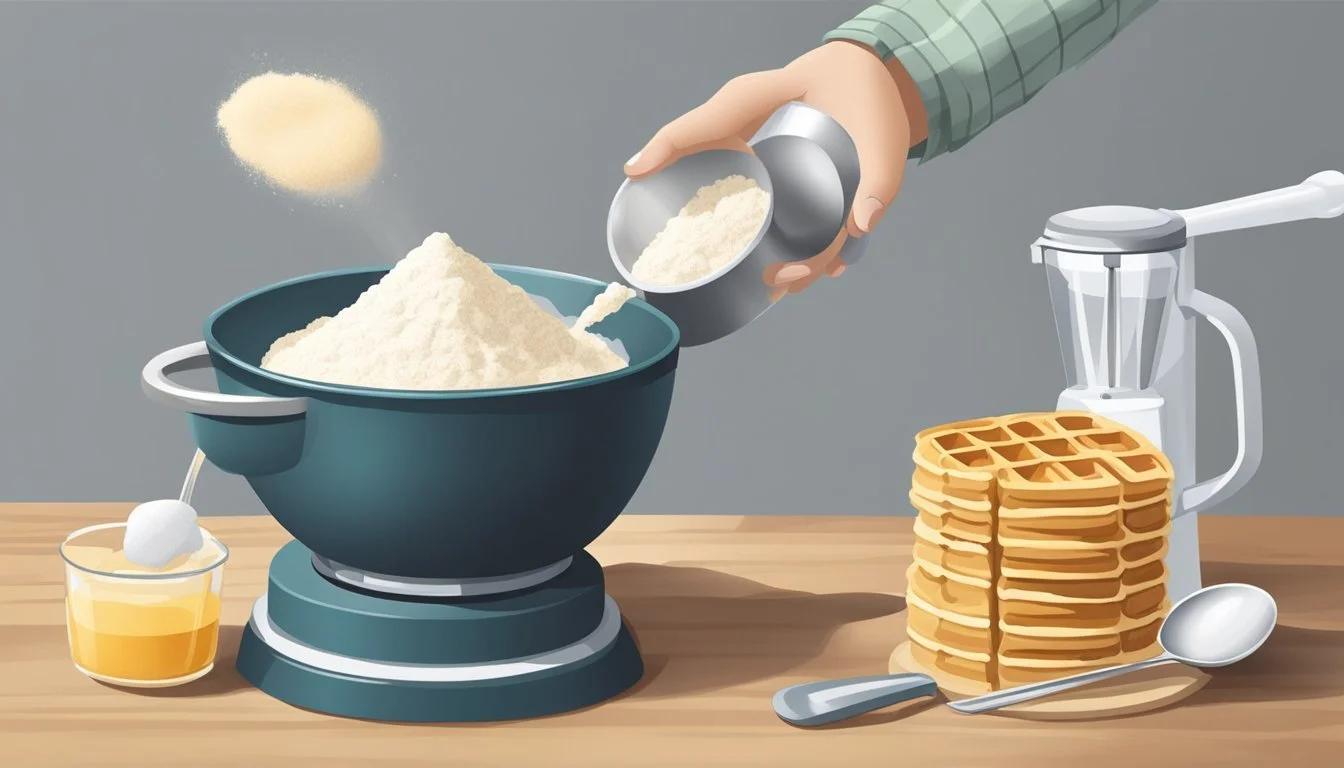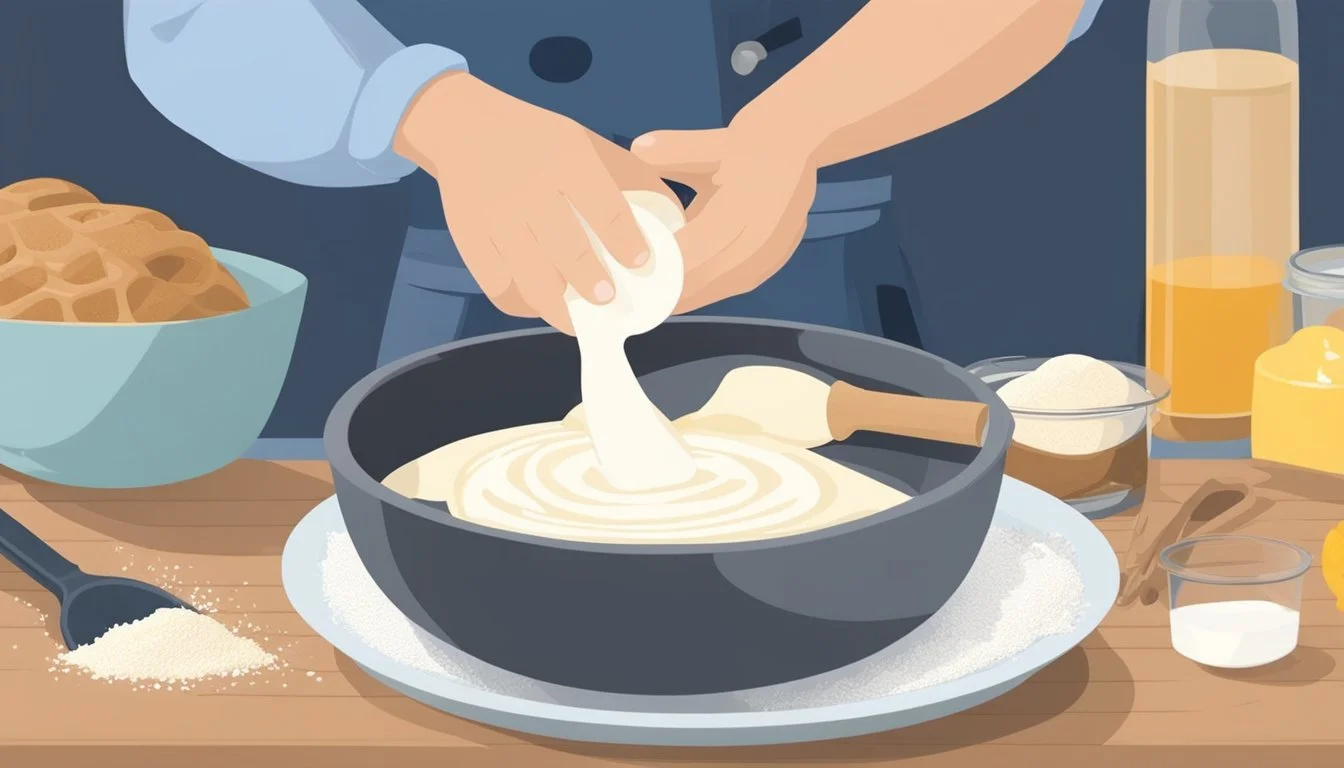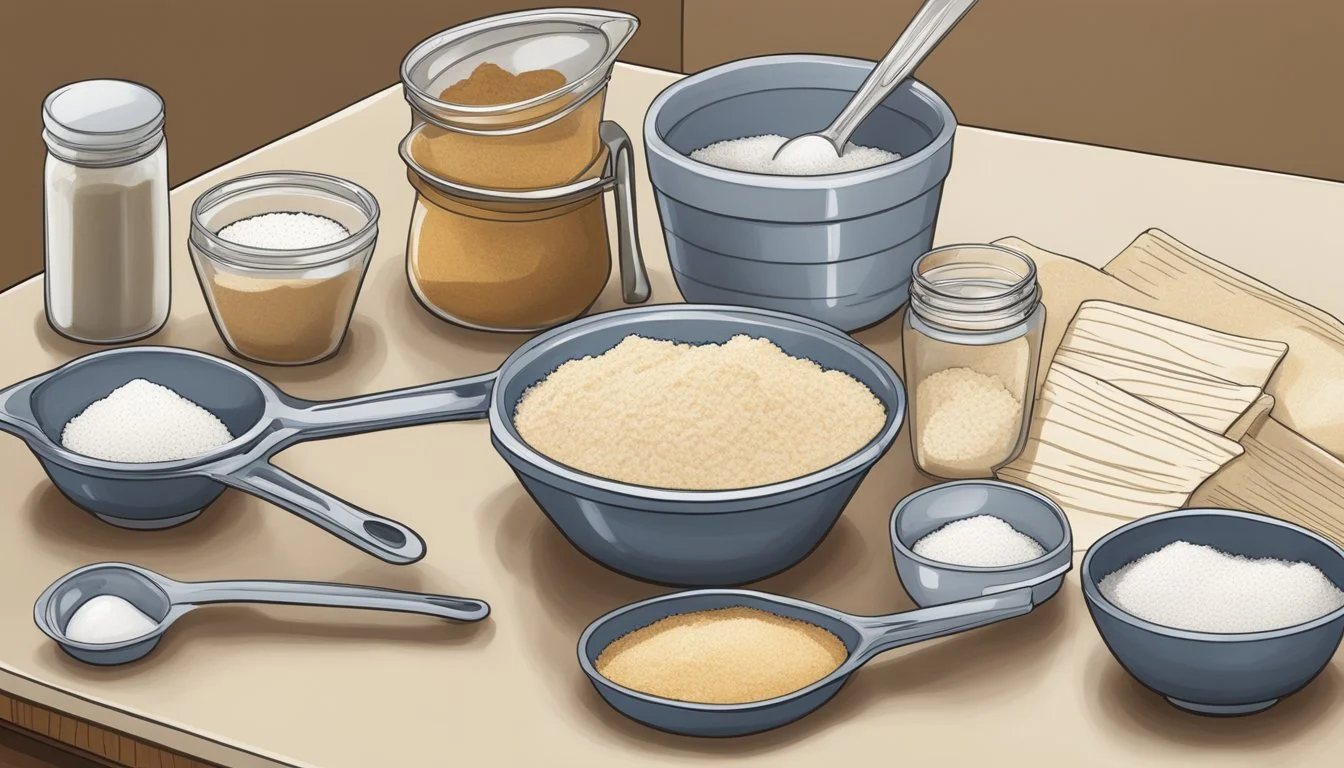How to Measure Ingredients Accurately for Perfect Homemade Waffle Mix
Measuring ingredients accurately is a crucial step in creating the perfect homemade waffle mix. Homemade waffles offer the comfort of a delightful home-cooked breakfast and the satisfaction of creating something from scratch. With a few essential tips, anyone can prepare a waffle batter that is consistent in taste and texture, ensuring a successful batch of waffles every time.
The key to easy-to-make, delicious waffles lies in the precision of combining wet and dry ingredients. For dry components like flour, sugar, baking powder, and salt, it’s imperative to use the right measuring cups and level off the excess with a knife for an exact measure. Wet ingredients—typically eggs, milk, and melted butter—demand a different approach, using measuring jugs to account for the correct volume and accounting for any additional liquids for flavor, such as vanilla extract.
By mastering the simple art of measurement, cooks can guarantee their homemade waffle mix will produce golden, fluffy waffles with every use of their waffle iron. This foundational step sets the stage for creative variations and toppings, elevating the humble waffle to a personalized breakfast treat.
Essential Ingredients for Waffle Mix
Creating the perfect homemade waffle mix requires precision in measuring and understanding the roles of each component. The right balance leads to waffles with a desirable texture and flavor.
Flour Choices
Flour acts as the structure of the waffle. All-purpose flour is commonly used for its balance of protein, which contributes to the waffle's firmness and fluffiness.
All-purpose flour: A versatile option that produces consistently good results.
Whole wheat flour: Offers a healthier alternative with a denser texture.
Gluten-free flour: Necessary for those with gluten sensitivities, though additional binding agents may be required.
Sweetening Agents
Sugar isn’t just for sweetness; it also contributes to the browning and crispiness of the waffles.
Granulated sugar: Provides sweetness and aids in achieving a golden-brown exterior.
Maple syrup: Adds a distinctive flavor and can be used both in the batter and as a topping.
Leavening Agents
Leavening agents are crucial for a light and airy waffle texture.
Baking powder: Most commonly used to help the batter rise.
Quantity to Use Effect on Waffles 1-2 teaspoons Creates a light texture
Dairy Elements
Milk hydrates the batter, dissolves the sugar and salt, and contributes to the overall richness.
Whole milk: Provides moisture and lends richness to the batter.
Buttermilk: Adds a tangy flavor and contributes to the leavening process when combined with baking powder.
Eggs: The Binding Component
Eggs are essential for binding the ingredients together and adding structure.
Whole eggs: Should be whisked properly to integrate air for a fluffier texture.
Flavor Enhancers and Spices
Additional flavors and spices transform the waffle from a basic to a standout breakfast dish.
Vanilla extract: A dash enhances the sweet, aromatic profile of the waffles.
Cinnamon and nutmeg: Commonly used spices that provide warmth and complexity to the flavor.
Spice Suggested Quantity Cinnamon ½ teaspoon Nutmeg A pinch for subtle depth
Salt is another additional component that shouldn't be overlooked. A small amount enhances the overall flavor of the waffle batter.
Preparing the Waffle Batter
Properly measuring and combining ingredients are crucial steps in creating a delicious waffle batter. This section breaks down the process into manageable steps ensuring a consistent and flavorful outcome with each batch.
Combining Dry Ingredients
One begins by measuring 2 cups of all-purpose flour along with other dry ingredients such as sugar, baking powder, baking soda, and salt. These should be precise: for instance, four teaspoons of baking powder and half a teaspoon of salt. Using a whisk, one should mix these ingredients in a large bowl to distribute them evenly and incorporate air, which aids in the lightness of the waffles.
Mixing in Wet Ingredients
Separately, the wet ingredients require attention to detail. Typically, one would combine 1-3/4 cups of milk with two large eggs and 1/2 cup of vegetable oil or melted butter. These provide moisture and richness to the waffle mix. It is important to whisk these components well before gradually mixing them with the dry ingredients to prevent any lumps.
Achieving the Right Consistency
The key to the perfect batter consistency is to blend until just combined; overmixing can result in tough waffles. The batter should be smooth but still have a slightly thick consistency that can easily pour out of a measuring cup. If the mixture is too thick, one can add milk a tablespoon at a time until the desired consistency is reached. Conversely, if the batter is too thin, incorporating small amounts of flour can correct the issue.
Cooking and Waffle Iron Tips
Achieving perfect golden waffles involves more than just following a recipe—it requires precision in using the waffle maker itself. This section delves into the critical areas of preheating, batter portioning, and timing to help ensure waffles turn out wonderfully each time they're made.
Preheating the Waffle Maker
A waffle maker must be fully preheated to the right temperature before adding any batter. This ensures the batter will sizzle upon contact, which is crucial for creating a crispy exterior. Most waffle irons have an indicator light that signals when the appliance is ready to use, which typically takes about 5-10 minutes, depending on the model.
Portioning and Pouring Batter
Once the waffle iron is hot, the chef can pour the batter. The amount of batter needed varies based on the waffle iron size, but it commonly ranges from 1/3 cup for American-style waffles to 1/2 cup for Belgian-style waffles. The chef should pour the batter into the center of the iron and spread it near to the edges, stopping just short to prevent overflowing. For uniformity, a ladle or measuring cup can assist in keeping portions consistent.
Timing and Flipping
The cooking time for waffles tends to be between 3 to 5 minutes. If the waffle maker doesn’t have a built-in timer, it’s advised to set an external one to avoid overcooking. Flipping is not required for waffle irons that cook evenly on both sides. However, if using a flip waffle maker, one should turn it over after the first half of the cooking process to ensure even browning and cooking throughout. After each use, applying cooking spray ensures subsequent waffles won’t stick and helps maintain the non-stick surface of the waffle iron.
Customizing Your Waffle Mix
Creating a personalized waffle mix allows for a variety of flavors and accommodates different dietary needs. Through customizations, individuals can enjoy waffles tailored to their preferences, whether they're aiming for a specific diet or looking for a particular taste.
Variations for Dietary Restrictions
For those with dietary restrictions, waffles can still be inclusive:
Gluten-Free Options: Replace regular flour with gluten-free flour blends to cater to gluten intolerance. Ensure additional ingredients like baking powder are also gluten-free.
Whole Wheat Flour: Swap out white flour for whole wheat flour for a more fibrous, nutritious option, which can yield denser, heartier waffles.
Savory versus Sweet Options
Waffles need not be limited to sweet flavors; savory alternatives offer diverse meal possibilities:
Savory Waffles: Incorporate grated cheese, chives, or even crumbled bacon into the batter. These are perfect for pairing with poached eggs or a dollop of sour cream.
Sweet Waffles: Traditional sweet waffles can be enhanced with vanilla extract, cinnamon, or syrup baked into the batter for a richer flavor profile, serving as a base for fruit or whipped cream.
Add-ins and Toppings
Elevate the waffle experience with a myriad of add-ins and toppings to suit any palate:
Add-ins: Fold in chocolate chips, nuts, or pieces of fruit like blueberries directly into the batter.
Toppings: Garnish baked waffles with freshly sliced fruit, a generous helping of syrup, a sprinkle of powdered sugar, or a dollop of whipped cream.
Remember, when adding wet ingredients like fruit or syrups, one may need to adjust the batter's consistency accordingly. Always mix add-ins gently to maintain the batter's structure for the perfect waffle.
Storing Homemade Waffle Mix
Proper storage of homemade waffle mix is crucial for maintaining its freshness and ease of use. Utilizing the right methods can ensure that the mix stays dry and ready whenever one wishes to create delicious waffles.
Short-Term Storage Options
For short-term storage, one should place the waffle mix in an air-tight container. This can be a plastic container with a tight-fitting lid or a jar specifically designed for dry goods. The container should be stored in a pantry or a cupboard away from heat and light. Keeping the mix away from moisture and excess air will help maintain its freshness for several weeks.
Long-Term Freezing
For extending the life of homemade waffle mix beyond a few weeks, the freezer offers a viable solution. One can use heavy-duty zip bags or freezer-safe containers to store the mix. It's beneficial to label the bag or container with the date of storage. To prevent freezer burn and flavor transfer, one might also consider wrapping the container in wax paper before placing it in the freezer. Stored this way, the waffle mix can retain its quality for up to six months, ensuring that one can enjoy homemade waffles even on a moment's notice.
Serving Suggestions and Presentation
When presenting homemade waffles, the focus should be on the harmony of flavors and the appeal of the arrangement. A well-plated waffle not only tantalizes the taste buds but also captures the eye, making it a star attraction for a brunch spread or a delightful post on Instagram.
Plating Techniques
For an aesthetically pleasing look, chefs typically place waffles centrally on a round plate. Utilizing a square plate can offer a delightful contrast to the circular waffles, adding a touch of modern elegance. A dusting of powdered sugar can add a snowy appearance that enhances the visual appeal. Careful placement of sliced bananas or a drizzle of Nutella in a zigzag pattern adds both flavor and a professional touch.
Visual balance: Maintain a central focal point with the waffle.
Contrast and texture: Use garnishes like fruit to add color and texture.
Pairing with Toppings and Syrups
A selection of toppings and syrups allows diners to customize their waffle experience. Drizzling maple syrup over the waffles brings a classic sweetness that is universally appreciated. For a fruitier option, blueberry syrup provides a tangy and visually appealing alternative. A dollop of honey adds a natural and subtle sweetness, which works well for those who prefer less sugar.
Toppings Description Maple Syrup A traditional choice that offers a rich and sweet flavor. Blueberry Syrup Offers a fruit-forward topping that is both sweet and tart. Honey A natural sweetener that is lighter in flavor.
Incorporating waffle toppings like berries, nuts, or a sprinkle of spices can elevate the dish further. For those who enjoy a creamy and rich addition, a spread of Nutella can be both satisfying and indulgent. Waffles served at brunch (What wine goes well with brunch?) can accommodate a range of preferences, from sweet to savory, ensuring all guests find a combination they enjoy.
Beyond Breakfast: Creative Uses for Waffle Mix
Waffle mix isn't just for breakfast anymore; it can be the base for a variety of sweet and savory dishes that delight the palate at any time of day.
Waffle Mix for Desserts
A homemade waffle mix easily transforms into a canvas for desserts. One can make a quick waffle batter and add chocolate chips or fruit for dessert waffles. Alternatively, waffle crumbs can serve as a crunchy topping for ice cream or a unique twist to a classic crumble dessert. Here are some specific ideas:
Dessert Waffles: Incorporate cinnamon and vanilla into the mix for a sweet treat. Serve with whipped cream and fresh berries.
Waffle Ice Cream Sandwiches: Cook waffles slightly thinner and cut them into desired shapes. Sandwich a scoop of ice cream in between and freeze until firm.
Savory Waffle Dish Integrations
When considering savory options, one's imagination is the only limit. For example:
Pizza Waffles: Use the mix as a base for pizza dough. Add Italian herbs and garlic powder to the mix, then top the cooked waffle with pizza sauce, cheese, and toppings before giving it a quick grill.
Waffle Tacos: Shape the waffle batter in a taco mold—fill with savory brunch recipes like scrambled eggs and bacon, or pulled pork and coleslaw for a lunchtime twist.
In each case, the waffle mix is adaptable and a resourceful ingredient for a plethora of culinary creations beyond the morning meal.
Tips for Making Waffles from Scratch
When creating homemade waffle mix, precision is key. Accurate measurements, proper mixing, and understanding the roles of specific ingredients can significantly affect the outcome of the waffles.
Ingredient Proportions
Accurate ingredient proportions are vital for the ideal texture and flavor. For instance:
Baking powder: Typically, 4 teaspoons per 2 cups of all-purpose flour provides the necessary lift.
Baking soda: If using buttermilk, add 1/2 teaspoon per cup of buttermilk to neutralize acidity and aid in browning.
Buttermilk: Imparts tanginess and, when combined with baking soda, contributes to a light texture.
Flour: A standard ratio is 2 cups for a batch of waffles, providing structure.
Mixing Techniques
One should mix dry and wet ingredients separately before combining to prevent overmixing, which can lead to dense waffles. Here's how:
Mix dry ingredients like flour, baking powder, and salt evenly in one bowl.
In another, combine wet ingredients — such as milk, egg yolks, and melted unsalted butter — ensuring that the butter is cooled to avoid cooking the eggs.
The Role of Fat in Waffles
Fat in waffles, such as oil or melted butter, contributes to a rich flavor and crispy exterior. One can use:
Vegetable oil: 1/2 cup adds moisture and crispiness without the taste of butter.
Melted butter: For added flavor, use an equal amount of unsalted butter in place of oil.
Proper Use of Egg Whites
Egg whites whipped to soft peaks incorporate air for fluffier waffles:
Beat egg whites until soft peaks form before folding into the batter.
Overbeaten egg whites, which form stiff peaks, can make the batter too rigid.
By carefully managing these factors, one can craft waffles that are perfectly crisp on the outside and tender on the inside.
Maximizing Flavor and Quality
Maximizing the flavor and quality of homemade waffle mix starts with the selection of premium ingredients and a balance of flavors. One should experiment with various additions to discover unique and satisfying results.
Choosing Quality Ingredients
The foundation of a great waffle begins with high-quality basics: flour, leavening agents, milk, eggs, and butter. For example, using organic eggs and milk can significantly enhance the natural flavors. Furthermore, the choice of flour can vary; all-purpose gives you standard waffles, while whole wheat can add a nuttier taste, and almond flour caters to those seeking a gluten-free option.
Ingredient Type Examples Flour All-purpose, Whole wheat, Almond flour Milk Whole milk, Buttermilk, Almond milk Sweetener Sugar, Honey, Maple syrup Fat Unsalted butter, Coconut oil, Canola oil
Balancing Flavors
A well-composed waffle mix balances sweetness, richness, and a hint of savory. For depth, spices like cinnamon or nutmeg can be included; a dash of pumpkin pie spice works exceptionally well in autumn-themed recipes. A small addition of vanilla extract enriches with a warm background note, while almond extract can offer a marzipan-like undertone.
Flavor Additions Suggested Measurement Vanilla extract 1 teaspoon Almond extract ¼ teaspoon Pumpkin pie spice ½ teaspoon Lemon zest 1 tablespoon
Experimenting with New Recipes
One elevates their waffle game by embracing experimentation. Additions like lemon zest can infuse a refreshing citrus aroma ideal for summer mornings. Exploring different types, such as Belgian waffles, welcomes experimentation with texture—from light and airy to crispy and golden. Each ingredient included should have a purpose and contribute to the overall taste profile.
Citrus touch: Grated lemon zest freshens the batter.
Belgian variety: They require a yeast-based batter for an airy interior.
Incorporating high-quality ingredients, balancing complex flavors, and experimenting with new recipes can turn a homemade waffle mix into a gourmet experience.
Engagement and Sharing
Engaging with an audience through sharing content is crucial for anyone looking to showcase their homemade waffle mix or recipes. By photographing your culinary creations and participating in online communities, one can spread their passion for breakfast delights, receive feedback, and inspire others.
Photographing Your Waffles for Social Media
Photographing waffles demands attention to detail to make them look enticing on platforms like Instagram and Pinterest. One should ensure good lighting and consider the composition of the plate, including any toppings. A variety of angles and close-up shots can help display the waffles' texture and golden color. Using hashtags such as #WaffleRecipe or #BreakfastRecipes increases the visibility of the posts.
Tips for Photographing Waffles:
Use natural light for clarity and shadow definition.
Arrange toppings neatly to add color and contrast.
Capture different angles to show waffle thickness and crispness.
Implement the rule of thirds for an appealing composition.
Sharing Recipes and Tips Online
Sharing your waffle recipe online allows for a broader reach and the ability to connect with fellow enthusiasts. One can choose to submit their recipe to a dedicated recipe sharing website, or share it on their personal blog or social media. When posting, it's important to provide clear instructions and ingredient measurements. Encouraging others to share their versions or adaptations of your recipe fosters a collaborative community.
Where to Share Recipes:
Blogs or personal websites with a dedicated following.
Social media platforms like Instagram, tagging related accounts.
Pinterest, using visually appealing graphics and step-by-step pins.
Online forums focused on breakfast recipes and cooking tips.
By engaging with the online community, one can gain valuable insights, improve their recipe, and enjoy the camaraderie of fellow cooking enthusiasts.

